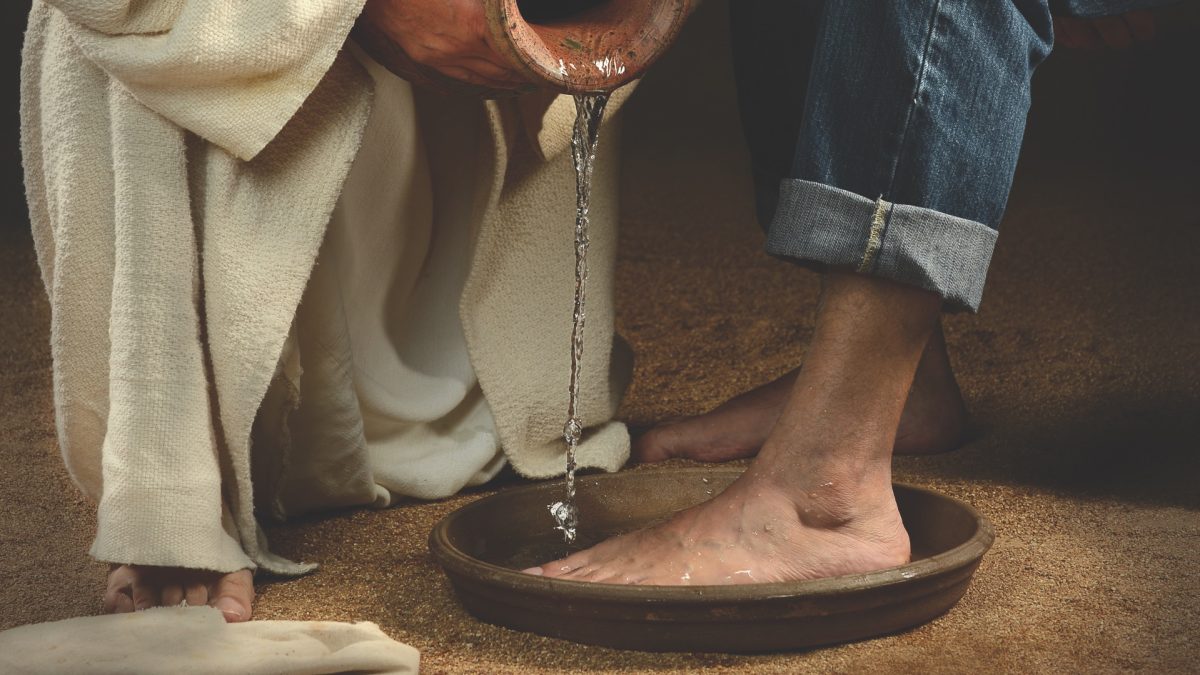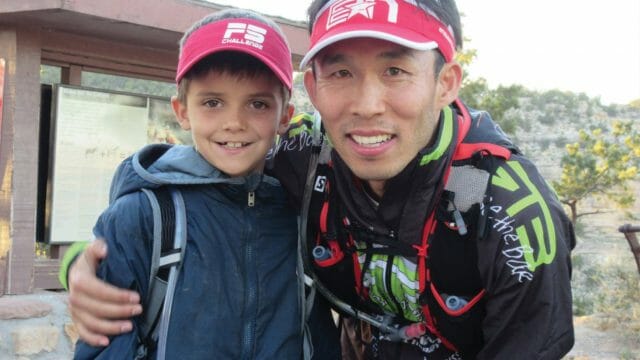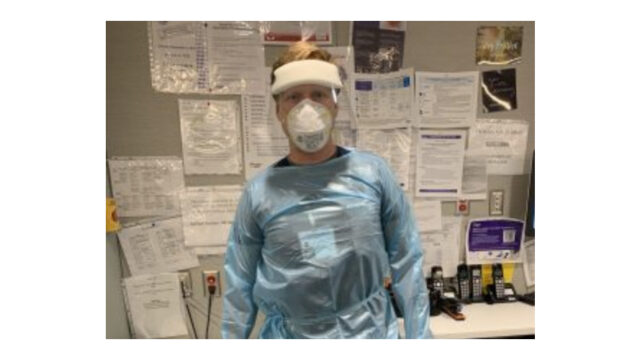Ellen White mentioned foot washing as a distinguishing feature of true believers before the topic of the seventh-day Sabbath became prominent.

The Bible emphasizes the vital importance of humility (Prov. 16:18; Micah 6:8; James 4:6; Matt. 11:29), and Jesus showed it by washing His disciples’ feet. He commanded them to do likewise (John 13:12-17). As Seventh-day Adventists we practice this “ordinance of humility” before we come to the Lord’s table. How did we discover this “ordinance”?
Among Early Adventists
When William Miller preached on the Second Advent, he was joined by ministers of various denominations. Among them was George W. Peavey, who reported on a conference in Grafton, Vermont, where he was part of a group who washed one another’s feet after the Lord’s Supper.1 In 1845 Peavey wrote a letter in defense of foot washing to Joseph Marsh, editor of The Voice of Truth, who published Peavey’s story to refute him.2 Peavey’s arguments were biblical: a Christian shows his love for Christ by obedience (John 14:15), the command of Jesus in John 13:12-17 is distinct, and by practicing it we learn humility.
Peavey’s letter and Marsh’s rebuttal started the discussion on whether foot washing is an ordinance like baptism and the Lord’s Supper. Opponents missed further biblical evidence and reduced it to an act of hospitality. A large body of Adventists rejected foot washing completely in May 1845 because a group of “Spiritualizers,” who saw themselves as angels for whom gender was irrelevant, practiced it among mixed genders or “promiscuously.” The early Adventists believed it to be “unscriptural” and “subversive of purity and morality.”3
This rejection challenged those who practiced foot washing to justify their view on it as an ordinance. Enoch Jacobs opened his periodical, the Day-Star, for the discussion.4 J. B. Cook addressed objections and wrote that foot washing is an “ordinance,” because Jesus “ordained” it, like baptism and the Lord’s Supper.5 O.R.L. Crosier agreed with Cook and looked “upon these ordinances as equal in importance.”6 Jacobs himself reported about meetings where foot washing was practiced and emphasized that they practiced the “long neglected command of Jesus.”7
Among Sabbatarian Adventists
To illustrate Ellen White’s point of view that foot washing should be performed gender-separately, the following anecdote is told: “The excited man kneeling before Ellen said, ‘The Lord tells me, Sister White, that I must wash your feet.’ ‘The Lord tells me,’ Ellen retorted quickly, ‘that you have no business with my feet at all. When my feet are washed, it will be by a sister, not by any man.’ ”8
It is noteworthy that Ellen Harmon (later White) mentioned foot washing as a distinguishing feature of true believers before the topic of the seventh-day Sabbath became prominent. In her letter to Jacobs, dated December 20, 1845, she reports her first vision from December 1844: “Then it was that the synagogue of Satan knew that God had loved us who could wash one another’s feet.”9
Early counsel from Ellen White on foot washing was published in her book Experience and Views. In a vision she received, God had confirmed that foot washing should be performed. It will keep believers “humble and separate from the world, and from backsliding.”10 Ellen White called the believers to follow the example of Jesus as exactly as possible, but at the same time, it “should be more frequently practiced,” which in her day would mean more than once a year. Because of prejudice, caution, restraint, and wisdom should be used in carrying it out and passing it on to others.
Some thought that foot washing should be done after the Lord’s Supper because the King James Version says in John 13:2, “supper being ended.” R. F. Cottrell and W. H. Littlejohn answered in detail, giving the right order—that foot washing precedes the Lord’s Supper.11
Reports in the Review and Herald confirm that foot washing was practiced, often referred to in the plural as “ordinances of the Lord’s house,” mostly in the evening (“supper”). It did not take place every week, only at larger gatherings such as conferences, when an ordained minister was present. In the 1860s believers administered foot washing once in three months, or four times in a year, at “quarterly meetings.”
Among Seventh-Day Adventists
Uriah Smith emphasized in his articles that foot washing is not about ritual cleansing. The Lord’s Supper is not about satisfying hunger or thirst, and the foot washing is not about cleaning dirty feet. It is not about a gesture of hospitality, because the guests usually washed their own feet. Jesus’ action was completely new and showed His humility. He gave us an example. Foot washing is the ideal preparation for the Lord’s Supper.12
The Lord’s Supper was celebrated at evening because supper was eaten at that time. W. H. Littlejohn wrote several articles about foot washing, starting in June 1878. He also addressed the timing. As Jesus did not attach His commandment to a time, Littlejohn argued that the Lord’s Supper must not take place in the evening.13
In the 1890s the Review published articles by Ellen White on foot washing. She confirmed and enriched former arguments and even corrected the understanding of a closed communion to an open one by emphasizing that Jesus washed the feet of Judas.14 At the 1980 General Conference Session the Lord’s Supper with the foot washing was formulated as Fundamental Belief 15 (and, in 2005, #16.)
1 G. W. Peavey, “Conference at Grafton,” Midnight Cry, Aug. 1, 1844, p. 22.
2 G. W. Peavey, “Washing Feet,” Voice of Truth, Apr. 23, 1845, p. 29; J. Marsh, “Remarks on the Above,” Voice of Truth, Apr. 23, 1845, pp. 29, 30.
3 William Miller, “Mutual Conference of Adventists at Albany,” Advent Herald, May 14, 1845, p. 107.
4 For a detailed list of references in the Day-Star, see the appendix in Thomas Eißner, “The Development of the ‘Ordinance of Humility’ in the Seventh-day Adventist Church” (research paper, Andrews University, 2022).
5 J. B. Cook, “To Be Christians, We Must Do the Works of Christ,” Day-Star, July 1, 1845, pp. 31, 32.
6 O.R.L. Crosier, “Letter From Bro. Crosier,” Day-Star, Aug. 25, 1845, p. 10.
7 [Enoch Jacobs], “The Meetings,” Day-Star, July 15, 1845, p. 40.
8 Ellen G. White, Manuscript Releases (Silver Spring, Md.: Ellen G. White Estate, 1990), vol. 5, p. 192.
9 Ellen G. Harmon, “Letter From Sister Harmon,” Day-Star, Jan. 24, 1846, p. 31; Early Writings (Washington, D.C.: Review and Herald Pub. Assn., 1882, 1945), p. 15.
10 E. G. White, Early Writings, p. 116.
11 R. F. Cottrell, “Did Jesus Wash the Disciples’ Feet Before, or After, the Institution of the Supper?” Review and Herald, Dec. 23, 1858, p. 36; W. H. Littlejohn, “The Order to Be Pursued in the Administration of the Ordinances,” Review and Herald, Jan. 9, 1879, pp. 9, 10; Jan. 16, 1879, pp. 17, 18.
12 Uriah Smith, “Conference Address,” Review and Herald, July 24, 1856, p. 93; “Feet-Washing,” Review and Herald, Feb. 24, 1859, p. 108; “Feet Washing,” Review and Herald, Apr. 22, 1862, p. 165; “The Ordinance of John XIII,” Review and Herald, June 16, 1868, p. 408.
13 W. H. Littlejohn, “The Proper Time for the Administration of the Ordinances,” Review and Herald, Feb. 27, 1879, p. 66.
14 Ellen G. White, “Accusers Agent of the Adversary,” Review and Herald, Dec. 11, 1894, pp. 769, 770; “The Lord’s Supper and the Ordinance of Feet-Washing,” Review and Herald, May 31, 1898, pp. 341, 342; June 7, 1898, pp. 357, 358; June 14, 1898, pp. 373, 374; June 21, 1898, pp. 389, 390; June 28, 1898, pp. 405, 406; July 5, 1898, pp. 421, 422.








